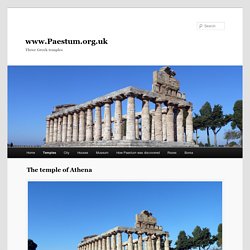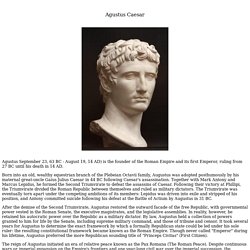

What is the role of civil disobedience today? – Lesson Plan. By Doug DuBrin, an English and history teacher, as well as an editor and writer Subject(s) Social Studies, Civics Estimated Time: Two to three class periods, plus extended activities Grade Level.

Civil ulydighed. I bred forstand har modstanden mod statsmagten antaget to hovedformer: Bekæmpelse af uretmæssige herskere - gerne omtalt som tyranmordets problem - og civil ulydighed mod enkelte love eller påbud med hjemmel i love.

Forskellen mellem disse to modstandsformer gælder hovedsagelig omfanget: Den første afviser al statsautoritet, så længe den er i hænderne på illegitime udøvere; Den anden vender sig først og fremmest mod uretfærdige love og tager sigte på at ændre dem gennem reformer indenfor det eksisterende politiske system. Sokrates og Lovene - Liberator. Sokrates. Retorik er demokratiets kur, manipulation dets sygdom. Eliot, Charles W., ed. The Harvard Classics and Harvard Classics Shelf of Fiction. 1909-1917. Catastrophe of Art at the Hands of Fascism from Marinetti to Hitler ~ Cultural Studies Blog. American Renaissance. American Renaissance painted decor: gilded stencilling on an olive green ground in the Office of the Secretary of the Navy in the Executive Office Building, 1879 (now the Vice President's Ceremonial Office) Ennobled currency: The central vignette of the US$2 bill, Series 1896: Blashfield's Science presents Steam and Electricity to Commerce and Manufacture.

In the history of American architecture and the arts, the American Renaissance was the period from 1876 to 1917[1] characterized by renewed national self-confidence and a feeling that the United States was the heir to Greek democracy, Roman law, and Renaissance humanism. The American preoccupation with national identity (or New Nationalism) in this period was expressed by modernism and technology as well as academic classicism. Utopias, past and present: why Thomas More remains astonishingly radical.
Thomas More’s Utopia, a book that will be 500 years old next year, is astonishingly radical stuff.

Not many lord chancellors of England have denounced private property, advocated a form of communism and described the current social order as a “conspiracy of the rich”. Such men, the book announces, are “greedy, unscrupulous and useless”. There are a great number of noblemen, More complains, who live like drones on the labour of others. Tenants are evicted so that “one insatiable glutton and accursed plague of his native land” may consolidate his fields.
Plate 4: St. Mark's and St Luke's churches, Kennington and West Norwood. Ammi B. Young. Ammi Burnham Young (June 19, 1798 – March 14, 1874)[a] was a 19th-century American architect whose commissions transitioned from the Greek Revival to the Neo-Renaissance styles.

His design of the second Vermont State House brought him fame and success, which eventually led him to become the first Supervising Architect of the U.S. Treasury Department. As federal architect, he was responsible for creating across the United States numerous custom houses, post offices, courthouses and hospitals, many of which are today on the National Register. His traditional architectural forms lent a sense of grandeur and permanence to the new country's institutions and communities. West Virginia State Capitol by Cass Gilbert. West Virginia State Capitol (page 1 of 2 pages) Cass Gilbert west wing: 19244-25; east wing: 1926-27; rotunda: 1930-32 Continue to page 2.

See Index for other buildings by Cass Gilbert on this site. Click here to return to index of art historical sites. Click here to return to index of artists and architects. Click here to return to chronological index. Paestum Temple of Athena (Ceres) The first temple that one sees on entering the site is the so called Temple of Ceres, though it was almost certainly dedicated to Athena.

Classical Orders of Architecture. Of the three columns found in Greece, Doric columns are the simplest.

They have a capital (the top, or crown) made of a circle topped by a square. The shaft (the tall part of the column) is plain and has 20 sides. Agustus Caesar. Agustus Caesar Agustus September 23, 63 BC - August 19, 14 AD) is the founder of the Roman Empire and its first Emperor, ruling from 27 BC until his death in 14 AD.

Born into an old, wealthy equestrian branch of the Plebeian Octavii family, Augustus was adopted posthumously by his maternal great-uncle Gaius Julius Caesar in 44 BC following Caesar's assassination. At undervise tematisk i Homer - Oldtidskundskab. At undervise i Homer kræver at man forstår begrænsningens kunst.

No Cookies. Bruni. Authors born between 1300 and 1450 CE Click Up For A Summary Of Each Author Contents Introduction Learned Women Importance of Reading Guidance from the Past. Ancient Athens. The Pnyx is the ancient remains from what was once was the Athenian Assembly, the world's first democratic legislature. It was at this location approximately 500 years BC, that the concept of democracy was first practised. Here, male Athenian citizens were able to debate issues of social importance, run for office and vote at Pynx. Sexuality in ancient Rome. Threesome in a boat, surrounded by beasts; sex scenes set on the Nile consistently feature the a tergo position, often combined as here with fellatio[1] Male–female couple on the back of a bronze mirror (ca. 70–90 AD) Sexual attitudes and behaviors in ancient Rome are indicated by art, literature and inscriptions, and to a lesser extent by archaeological remains such as erotic artifacts and architecture.
Women in ancient Rome. The educated and well-traveled Vibia Sabina (ca. 136 AD) was a grand-niece of the emperor Trajan and became the wife of his successor Hadrian; unlike some empresses, she played little role in court politics and remained independent in private life, having no children and seeking emotional gratification in love affairs[1] As is the case with male members of society, elite women and their politically significant deeds eclipse those of lower status in the historical record. Inscriptions and especially epitaphs document the names of a wide range of women throughout the Roman Empire, but often tell little else about them. Childhood and education[edit]
This web site honors all those who have worked to bring the Ara Pacis so impressively back to life. Posted 15 April 2011 Any significant additions will be dated. Charles S. Rhyne Professor Emeritus, Art History Reed College. Ancient Greece sites.